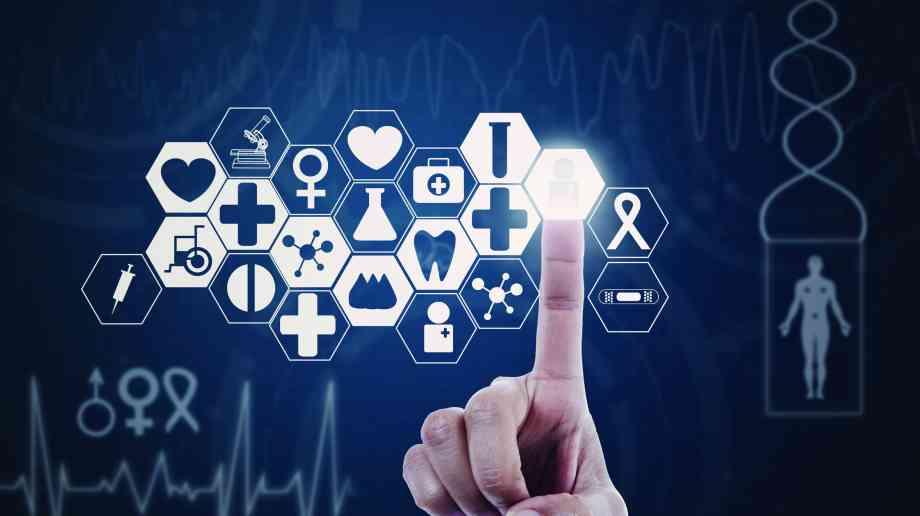As automation impacts society, Sascha Giese examines what the future holds for healthcare
If we take the World Economic Forum prediction—which states by 2025, half of all work tasks will be carried out by machines—at face value, we’re set to see some huge changes in the next few years. Indeed, workplace automation has quickly become a major driver of innovation and efficiency across almost every part of society, and its eventual role within healthcare will offer us all personal insight into how it will impact daily life.
The increasing sophistication of AI-powered chatbots (and the growing emergence of voicebots) are among many examples of the impact of technology on traditional areas of human-to-human interaction. The last 12 months have only helped accelerate the levels of innovation and acceptance of technology adoption, as organisations everywhere focused on maintaining access to valuable information, advice, and services.
The 'digital transformation' of healthcare, however, needs to be approached with sensitivity and a degree of caution. Public skepticism can be difficult to overcome, especially when emotive issues are at stake—and there are few more loaded with emotion than health. Ultimately, whether the implementation of healthcare automation at the point of need improves outcomes and equality will be a major test of success.
Yet, if smart healthcare technologies can prove themselves accurate and effective, and if they help maintain services of a consistent standard across society, then stakeholders at every level of the public health system stand to benefit. If patients receive access to better treatment more quickly, and healthcare professionals feel confident in the technology and can focus their efforts on more specialist requirements, the future could be exciting and for many of us, more healthy.
Let’s not forget, millions of people around the world have already embraced the advantages healthcare technology can bring, with automation offering a further stage in a long-term journey. For instance, the unprecedented levels of enforced isolation and remote working seen over the past year have broadened the acceptance of technology as a cultural and lifestyle norm. Indeed, the public sector in general, and healthcare in particular, moved quickly to utilise digital services—not only to deal with an urgent health crisis, but to maintain access to vital day-to-day services.
As a result, the demand for telehealth technology is skyrocketing, with a 2020 report from Frost & Sullivan predicting 'massive growth' in the U.S. alone. Domestically, the Covid-19 crisis required healthcare services to adapt at a speed described in the media as '10 years of change in one week'.
Public engagement is vital
But what about healthcare 'consumers?' If we’re to be offered wider access to automated digital services, we also need to see the same type of experience we get from the best online retailers and businesses because the consumerisation of many traditional services is setting new standards. The contrast between old and new is increasingly apparent: for example, in many situations, members of the public are still required—or are given the option—to print forms from government websites, fill them in by hand, and post them to the relevant department. On arrival, an employee has to open all the envelopes, sort through the documents, and scan the relevant items into their IT systems to be processed.
These manual, or at best, hybrid processes where technology takes over down the line are increasingly incompatible with generations of people who have grown up with technology—and automation—as a valuable way to augment their lives. Placing these processes fully online and applying intelligent automation can add huge value and significantly improve efficiency and the customer experience—this is as applicable to healthcare as any other sector.
Extending healthcare automation from administrative tasks into the provision of diagnostic services and treatment is where we’re presently heading. One of the biggest obstacles the public sector faces as it looks to evaluate the use of automation in healthcare is attracting talent and addressing the huge training, reskilling, and upskilling challenge required of a workforce looking at evolving roles and responsibilities. Meeting those needs will play a role in determining the success of healthcare automation in the long term.
Looking ahead
Given these opportunities and challenges, what benefits are we likely to see in the years ahead across a healthcare system where tech-led automation plays a vastly increased role? For example, public healthcare systems are always under cost pressure, no matter the level of government funding. Automation has an important role to play taking on the burden of simple and repetitive tasks, and by doing so, allows employees to focus more on the aspects of healthcare that will forever remain reliant on human input or interaction.
Automation will also help increase the standards of service delivery. Across digital society as a whole, we’ve come to expect high quality user experiences, and increasingly, the public sector is investing in ways to meet the standards set by the most popular digital platforms and services. In the process, our expectation of what constitutes a good telehealth experience will continue to grow and this pressure will help boost standards.
We’re at an important stage in the development of automation technologies, and clearly on a journey where growth seems inevitable across the working landscape as a whole. Healthcare must continue to apply the rigorous planning, management, and monitoring that characterises the best qualities of services developed over many decades. Blending the best of the traditional and the modern offers the best strategy for a future where automated healthcare benefits everyone.
Sascha Giese is Head Geek™ at SolarWinds.





